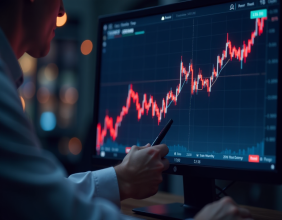Highlights:
- Represents bond yields with maturities of 10 years or more.
- Influenced by inflation, economic growth, and Federal Reserve policies.
- Impacts long-term borrowing costs and investment decisions.
The long end of the yield curve refers to the section that includes bond yields with maturities of 10 years or greater. These longer-term yields are crucial indicators of investor sentiment, economic expectations, and overall market conditions. Unlike short-term interest rates, which are more directly influenced by central bank policies, long-term yields reflect broader economic trends and inflation expectations.
Several factors influence the long end of the yield curve. Inflation expectations play a significant role, as higher anticipated inflation tends to push long-term yields higher. Additionally, economic growth prospects impact these yields, with stronger growth typically leading to higher long-term interest rates. Federal Reserve policies, particularly regarding interest rate hikes or quantitative easing, can also affect the direction of long-term yields.
The long end of the yield curve is vital for financial markets and the broader economy. It determines borrowing costs for governments, corporations, and consumers. For instance, mortgage rates and corporate bond yields are often tied to long-term Treasury yields. When long-term yields rise, borrowing costs increase, potentially slowing economic activity. Conversely, when they fall, borrowing becomes cheaper, stimulating investment and spending.
Investors closely monitor the long end of the yield curve for signs of economic shifts. A steepening yield curve, where long-term yields rise faster than short-term rates, suggests optimism about future growth. In contrast, a flattening or inverted yield curve, where long-term yields fall below short-term rates, may indicate an economic slowdown or potential recession.
Conclusion
The long end of the yield curve serves as a critical benchmark for economic conditions and financial markets. By reflecting inflation expectations, economic growth prospects, and monetary policies, it influences borrowing costs and investment decisions. Understanding its movements helps investors and policymakers navigate economic cycles effectively.





